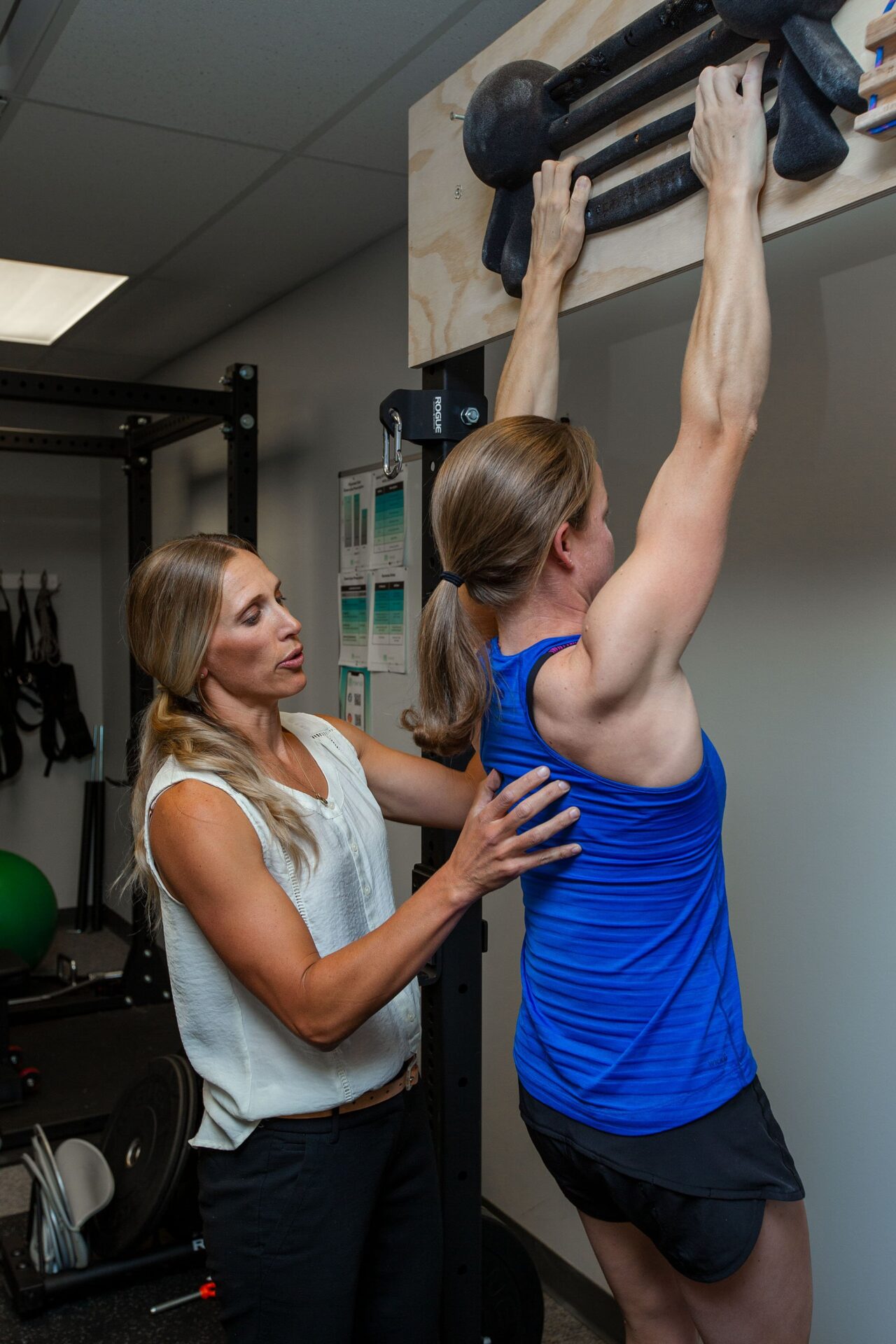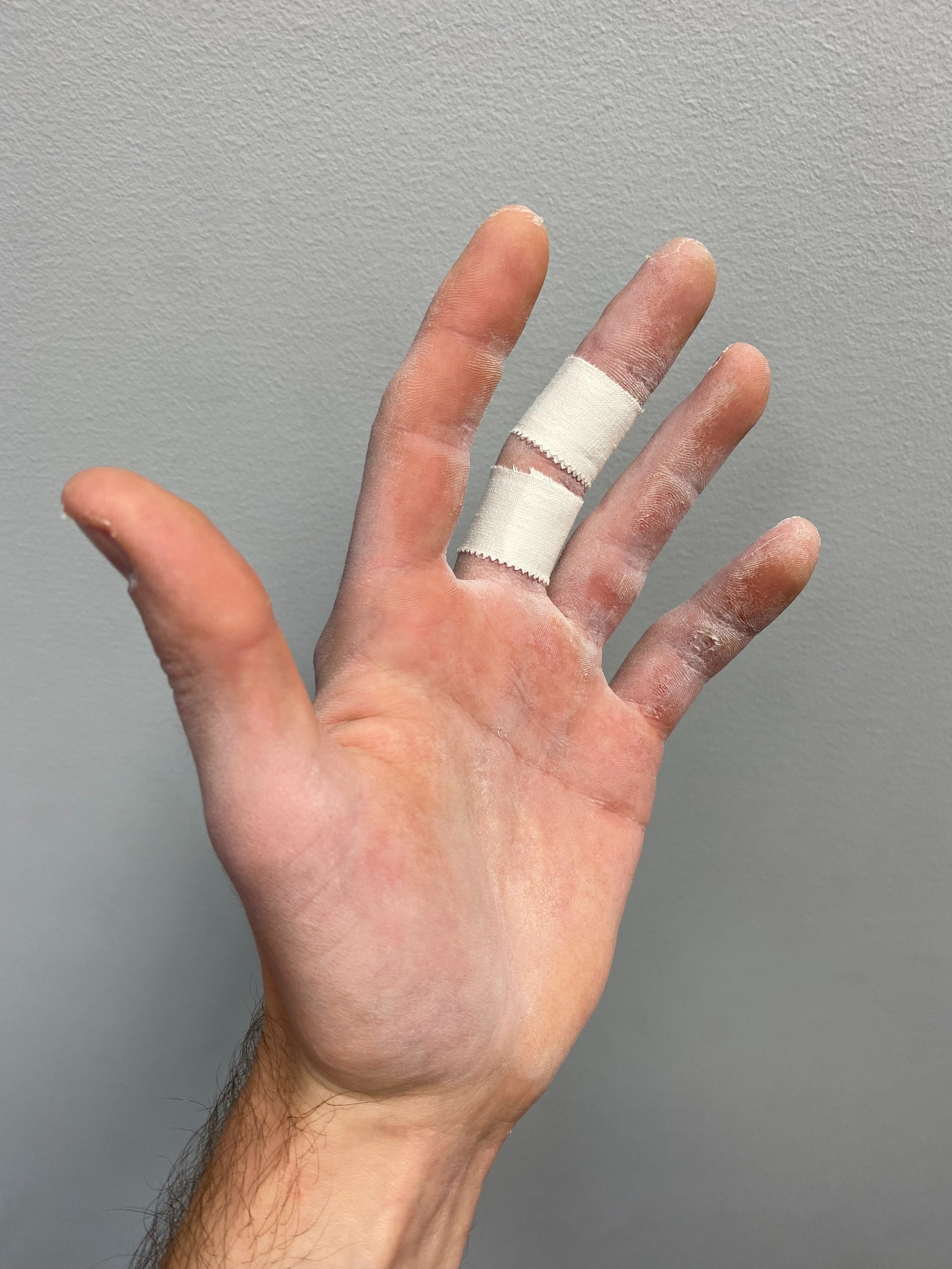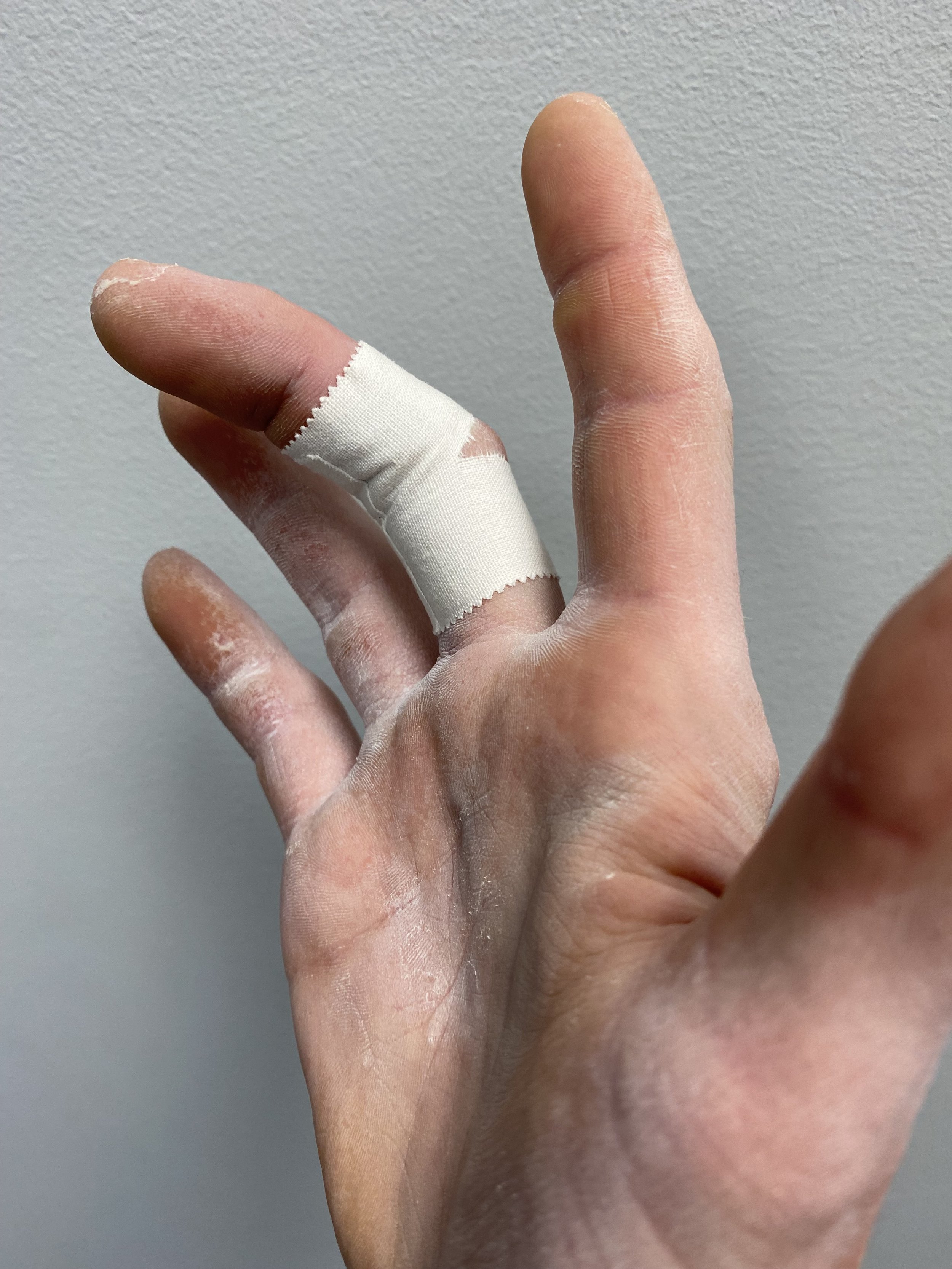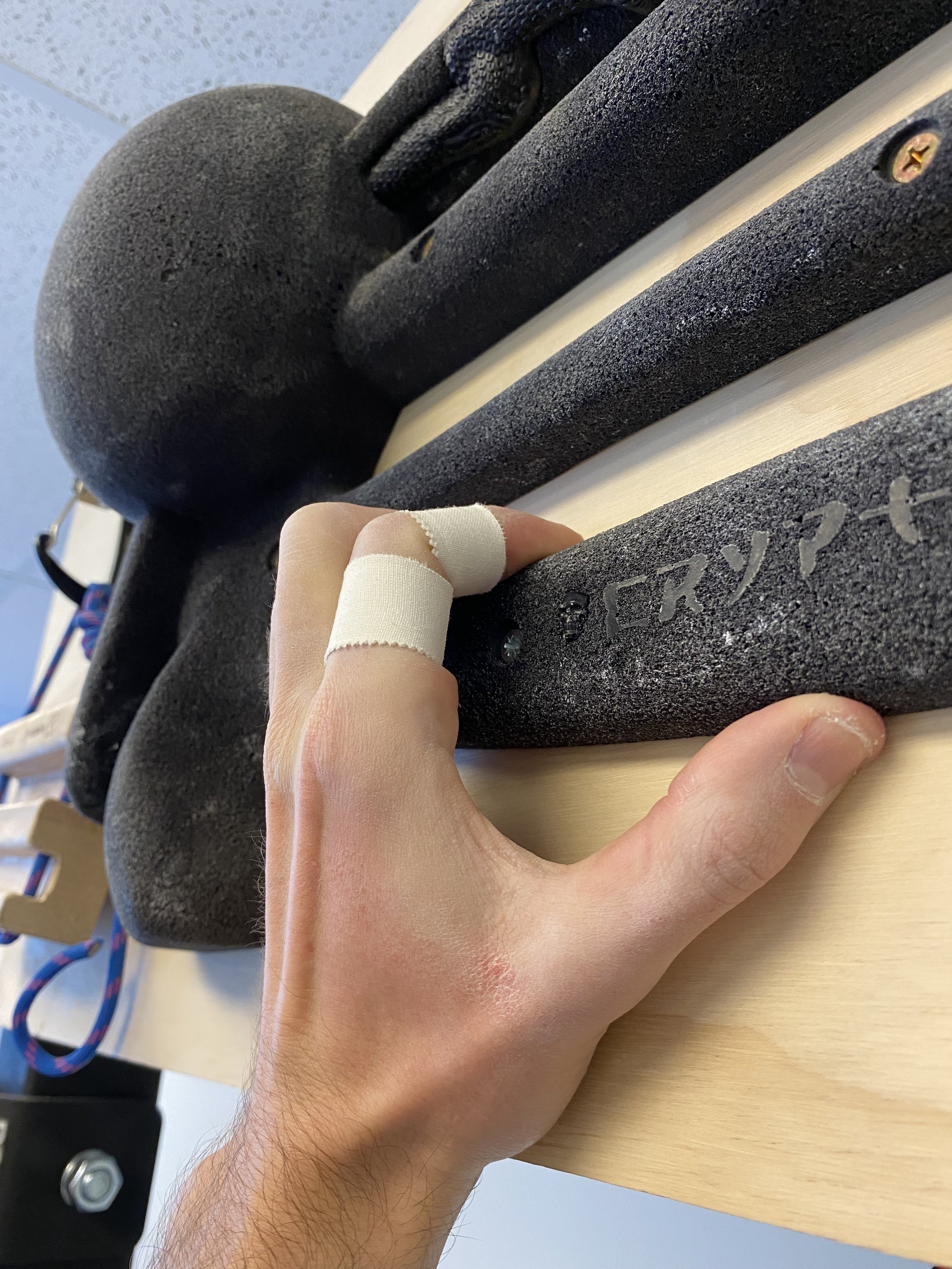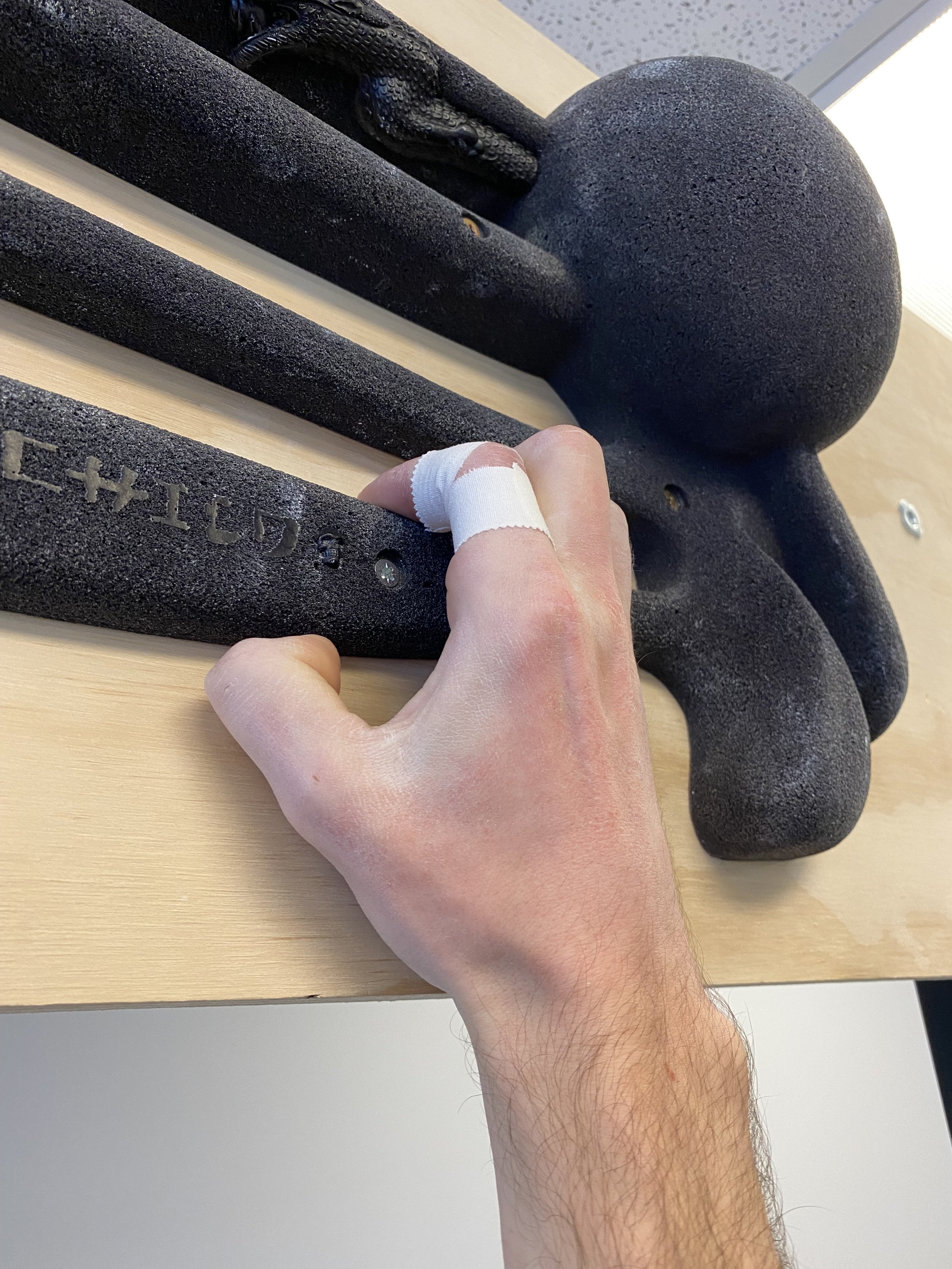Finger taping is used frequently among climbers. Tape is used for a variety of reasons including protecting skin, supporting finger joints and connective tissue, and to decrease finger pain while climbing. Although many climbers swear by using tape, the effects of taping are not well researched and the underlying mechanisms are poorly understood. Some researchers believe that taping provides significant structural support to connective tissues while others propose that the perceived support from taping reduces tissue sensitivity and decreases pain. One leading hypothesis is that taping improves forearm muscle activation, leading to improved strength and climbing performance. Dykes and colleagues created a research study to test this idea.
In their study the researchers tested the relative muscle activation of the finger flexor muscles (flexor digitorum profundus and flexor digitorum superficialis) under three different conditions: without finger tape, with circumferential tape, and with H-tape. Participants performed a static hold using a crimp finger position and muscle activation was measured using electromyography.
The results of the study showed no significant difference in finger flexor muscle activation between the three conditions. This study showed that finger taping does not change the muscle activation of the muscles we use for crimping while climbing.
Although the results were not statistically significant, the data were trending toward significance, indicating that there may be a subgroup of individuals who may respond more favorably to taping. As this topic is researched further we may be able to identify that subgroup so we can prescribe finger taping with improved precision and efficacy.
Mend Recommendation: use finger taping in the short term if you get perceived benefit as measured by finger pain or finger performance. There is little evidence to support the use of taping for finger injury prevention and conflicting evidence on the benefits of taping during finger rehabilitation. Use finger taping, particularly H-taping, as needed for short term pain reduction before slowly weaning your way off the tape.
The doctors of physical therapy at Mend in Boulder, Colorado stay up to date on the latest trends in climbing research. Schedule an appointment for a comprehensive finger evaluation and assessment to get the best recommendation for finger taping while climbing.
Circumferential Taping
H-Taping
Crimping with Circumferential Taping
Crimping with H-Taping

